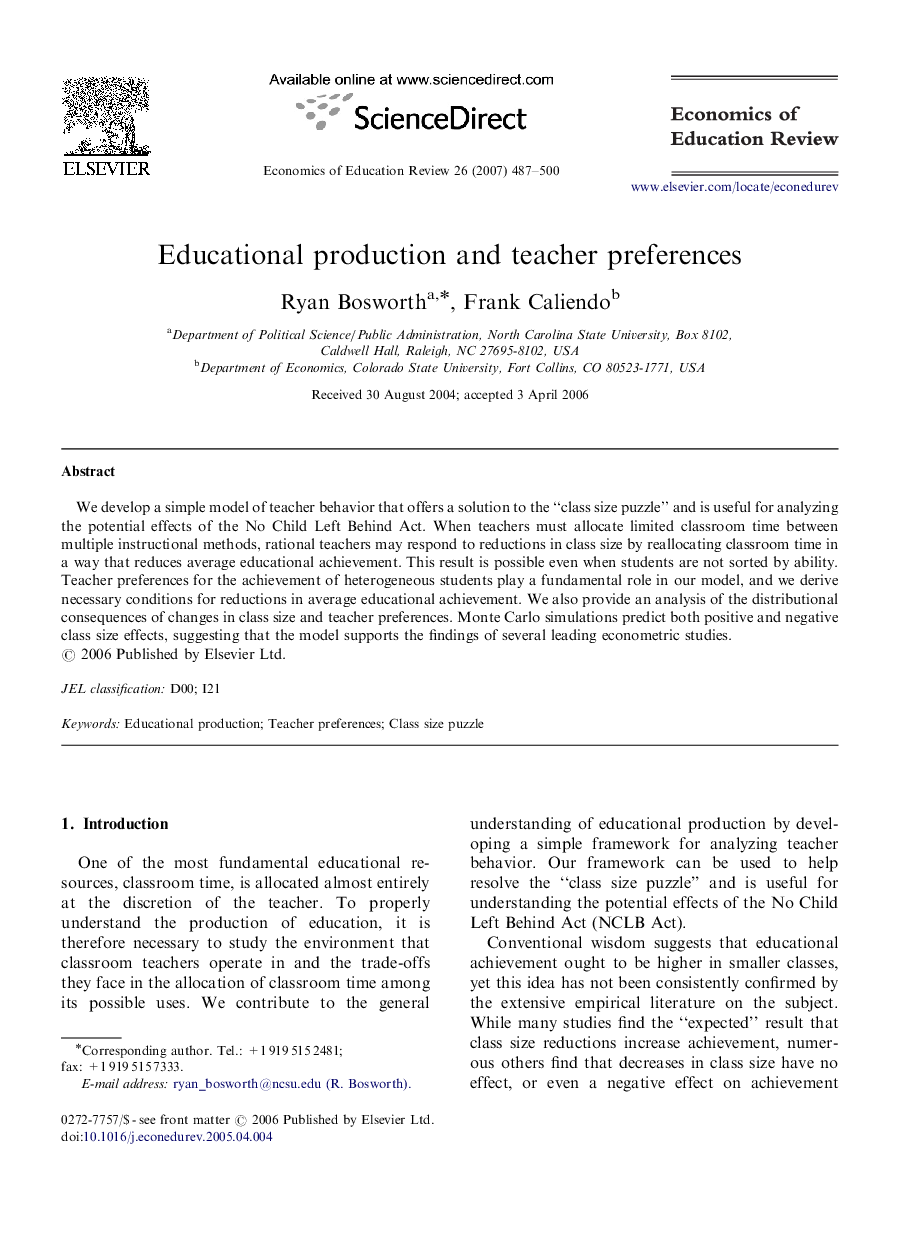| Article ID | Journal | Published Year | Pages | File Type |
|---|---|---|---|---|
| 354953 | Economics of Education Review | 2007 | 14 Pages |
We develop a simple model of teacher behavior that offers a solution to the “class size puzzle” and is useful for analyzing the potential effects of the No Child Left Behind Act. When teachers must allocate limited classroom time between multiple instructional methods, rational teachers may respond to reductions in class size by reallocating classroom time in a way that reduces average educational achievement. This result is possible even when students are not sorted by ability. Teacher preferences for the achievement of heterogeneous students play a fundamental role in our model, and we derive necessary conditions for reductions in average educational achievement. We also provide an analysis of the distributional consequences of changes in class size and teacher preferences. Monte Carlo simulations predict both positive and negative class size effects, suggesting that the model supports the findings of several leading econometric studies.
